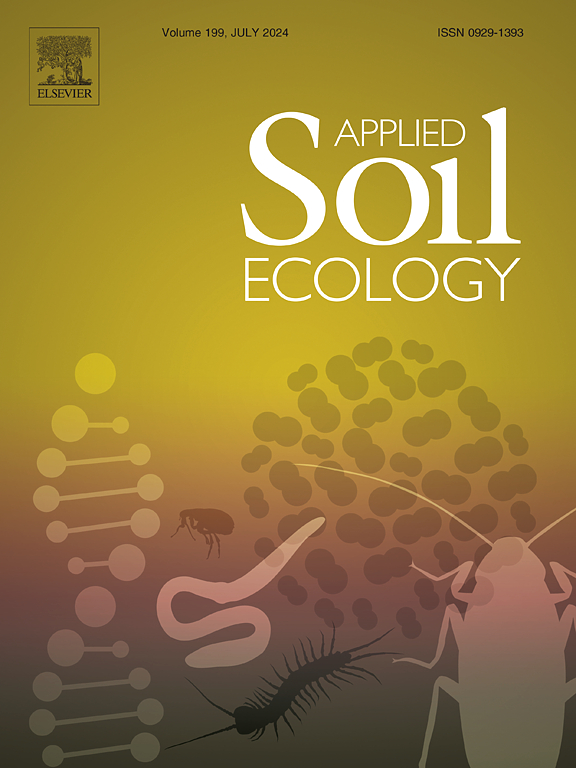土壤团聚体尺度硝化和反硝化过程中氮转化的微生物机制研究进展
IF 5
2区 农林科学
Q1 SOIL SCIENCE
引用次数: 0
摘要
土壤团聚体是土壤的基本结构单元,由初级颗粒(砂、粉、粘土)、胶结物质和孔隙组成。由不同粒径土壤团聚体组成的特定且独立的微生境是土壤氮素转化的生化反应器。微生境理化性质的差异导致微生物分化特征的不同,进而影响氮循环的关键过程。氮的固定和转化是由大、小、微团聚体共同进行的。然而,不同粒径团聚体对氮循环关键过程的相对贡献尚不清楚,不同形态氮的截留也不清楚。本文综述了土壤团聚体尺度上氮素在硝化和反硝化过程中的转化研究。我们总结了聚集体-微生物相互作用和聚集体内关键氮循环过程的最新进展,重点是微生物分化模式。未来的研究应优先考虑两个方向:(1)加强对原位土壤的监测和量化,特别是通过15N同位素示踪技术来阐明外源氮的命运和植物-微生物对氮形态的竞争;(2)基于微生物环境阈值的群落空间分布预测模型的建立。这些工作将促进土壤氮的长期供应和有效利用,并为推进微尺度氮循环理论提供坚实的科学基础。本文章由计算机程序翻译,如有差异,请以英文原文为准。
Advances on microbial mechanisms of nitrogen transformation during nitrification and denitrification at soil aggregates scale
Soil aggregate is a basic structural unit of soil, consisting of primary particles (sand, silt, clay), cementing materials and pores. Specific and independent microhabitats composed of soil aggregates of different particle sizes are biochemical reactors for soil nitrogen transformation. Differences in the physical and chemical properties of microhabitats lead to different microbial differentiation characteristics, which further influence key processes of the nitrogen cycle. The fixation and transformation of nitrogen is carried out by large, small and micro-aggregates together. However, the relative contribution of aggregates of different particle sizes to the key process of the nitrogen cycle is not clear, nor is the interception and retention of different forms of nitrogen. This paper reviews studies on nitrogen transformation during nitrification and denitrification at the soil aggregate scale. We summarize recent advances in aggregate-microbe interactions and key nitrogen cycling processes within aggregates, with emphasis on microbial differentiation patterns. Future research should prioritize two directions: (1) Enhancing the monitoring and quantification of in−situ soil, particularly through 15N isotope tracing technology to clarify the fate of exogenous nitrogen and plant-microbe competition for nitrogen forms; (2) Development of predictive models for aggregate spatial distribution based on microbial environmental thresholds. These efforts will promote long-term supply and efficient utilization of soil nitrogen, and provide a solid scientific foundation for advancing the theory of micro-scale nitrogen cycling.
求助全文
通过发布文献求助,成功后即可免费获取论文全文。
去求助
来源期刊

Applied Soil Ecology
农林科学-土壤科学
CiteScore
9.70
自引率
4.20%
发文量
363
审稿时长
5.3 months
期刊介绍:
Applied Soil Ecology addresses the role of soil organisms and their interactions in relation to: sustainability and productivity, nutrient cycling and other soil processes, the maintenance of soil functions, the impact of human activities on soil ecosystems and bio(techno)logical control of soil-inhabiting pests, diseases and weeds.
 求助内容:
求助内容: 应助结果提醒方式:
应助结果提醒方式:


